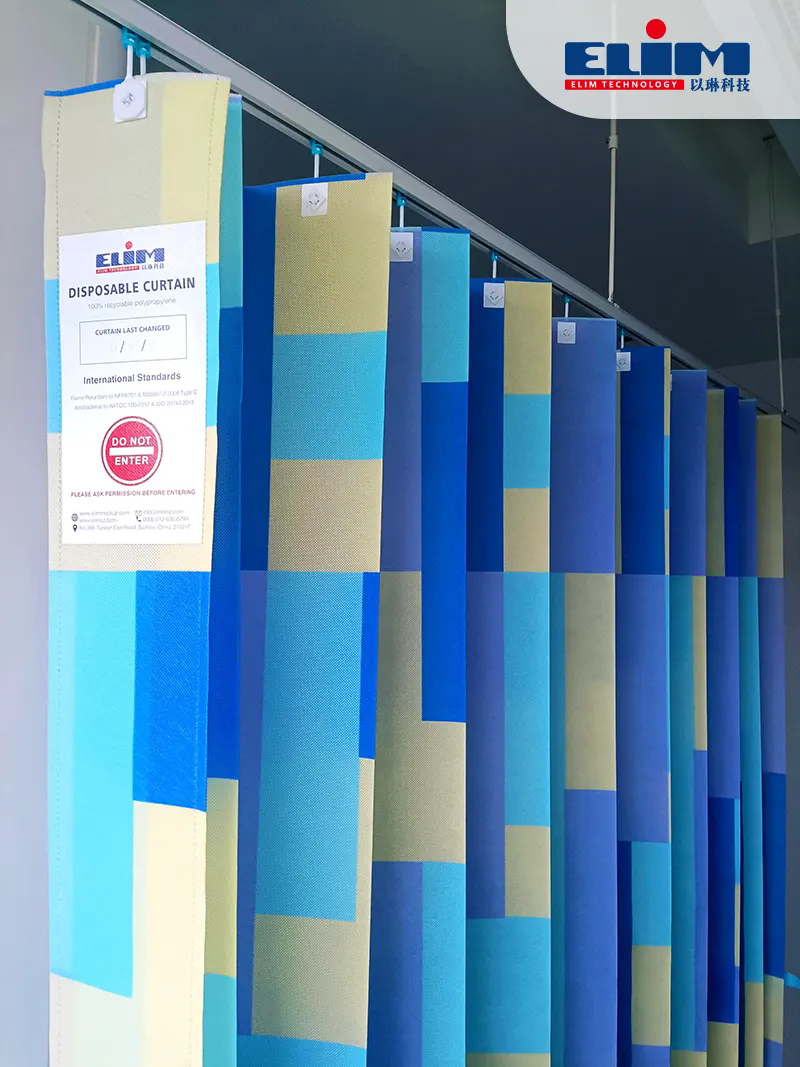Why Are Disposable Curtains Becoming a Popular Choice in Healthcare and Hygiene-Sensitive Environments?
2025-06-26
In settings where hygiene, safety, and infection control are top priorities, disposable curtains have emerged as a practical and cost-effective solution. Commonly used in hospitals, clinics, laboratories, and even commercial facilities, these curtains offer significant advantages over traditional reusable fabric curtains. But what makes disposable curtains so valuable in modern environments?

What Are Disposable Curtains?
Disposable curtains are single-use or limited-use privacy curtains made from non-woven or polypropylene-based materials. They are designed to be lightweight, flame-retardant, antibacterial, and easy to install and replace. Unlike fabric curtains that require regular laundering, disposable curtains are simply removed and discarded after use, helping to prevent cross-contamination.
Where Are Disposable Curtains Commonly Used?
Hospitals and Clinics: For patient privacy in wards, treatment areas, and isolation rooms.
Medical Laboratories: To create clean, separate work zones.
Dental and Veterinary Clinics: For sanitary division of spaces.
Emergency Shelters or Temporary Medical Facilities: Easy to deploy and manage in crisis situations.
Commercial Spaces: Used in cleanrooms, food production, or industrial areas with high hygiene standards.
What Are the Key Benefits?
1. Enhanced Infection Control
Disposable curtains reduce the risk of healthcare-associated infections (HAIs) by eliminating the need for shared fabric surfaces. Many options are antimicrobial treated and come with labels for change dates.
2. Time and Cost Savings
No laundering, drying, or maintenance required—saving on operational costs and labor. They are especially cost-effective in high-turnover settings.
3. Easy Installation and Replacement
Designed with universal hooks or eyelets, they can be quickly hung or removed, minimizing disruption in clinical workflows.
4. Compliance and Safety
Most disposable curtains meet flame-retardant and antimicrobial standards required by healthcare regulations.
5. Environmental Considerations
Although single-use, many disposable curtains are now made with recyclable or biodegradable materials, addressing sustainability concerns.
Types of Disposable Curtains
Standard Antibacterial Curtains: For general use in hospitals and clinics.
Cubicle Curtains: Designed to fit patient cubicles or room dividers.
Shower Curtains: Waterproof and mold-resistant for bathrooms and changing areas.
Custom Sizes and Colors: Available to match facility design or specific spatial needs.
How Often Should Disposable Curtains Be Replaced?
Most facilities replace them every 3 to 6 months, or immediately after patient discharge in infection control scenarios. Some curtains come with date labels to ensure timely changes, improving accountability and hygiene compliance.
Conclusion
Disposable curtains provide an efficient, hygienic, and regulatory-compliant solution for environments that demand high cleanliness and infection control. As healthcare facilities and industries place increasing importance on safety, convenience, and cleanliness, these curtains offer a smart alternative to traditional textiles. Their quick installation, antimicrobial protection, and cost-effectiveness make them a valuable asset in any modern hygiene-sensitive setting.


